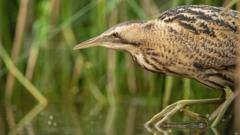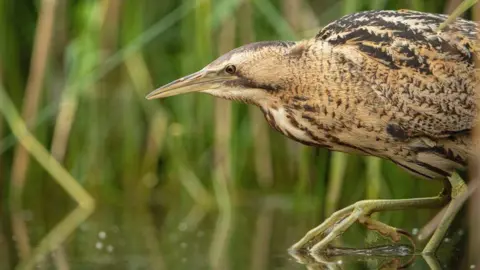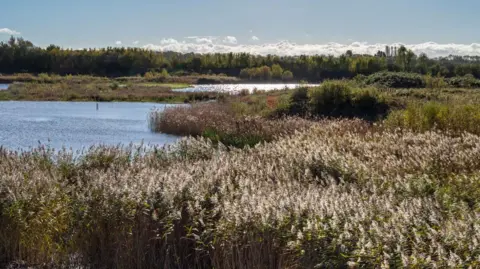
BBC News
 Ben Andrew/PA Media
Ben Andrew/PA MediaOne of the UK’s rarest birds has bred on a nature reserve near Hull for the first time in its history.
Yorkshire Wildlife Trust (YWT) said a juvenile bittern was spotted at North Cave wetlands last week, marking the first time the species had ever bred on its site.
Bitterns, which make a distinctive booming call, were once extinct in the UK but returned in the 20th Century.
YWT reserve manager Tony Martin said it was “heartening” to see that the trust’s “careful management of these wild spaces is having huge benefits for Yorkshire’s wildlife.”
 Getty Images
Getty ImagesBitterns are very difficult to see and often move through reeds at the water’s edge whilst looking for fish, the RSPB said.
Despite their secrecy, the species are also Britain’s loudest bird due to the sound that males make in the spring.
YWT said that the breeding of bitterns in Yorkshire still remained “very rare”, with “roughly 20 breeding pairs last on record”, which “can have up to six eggs”.
Earlier this month, the RSPB said four boomers had been heard at East Yorkshire’s RSPB Blacktoft Sands, as well as other places throughout the country.
 Ben Andrew/RSPB/PA Media
Ben Andrew/RSPB/PA MediaA national annual bittern survey announced in March showed 283 booming males were recorded in the latest results from the RSPB and Natural England.
Mr Martin said: “We have had overwintering bitterns at North Cave wetlands for a number of years, but bitterns need two healthy reedbed areas to breed successfully, as they use one for nesting and another for feeding.
“These sightings are the latest success at one of our flagship reserves.”
Since 2001, North Cave wetlands has expanded from 99 acres (40 hectares) to 350 acres (140 hectares), in partnership with construction company Breedon Group.
This included planting over 30,000 reed plugs to create habitat which will grow into the mature reedbeds bitterns prefer to live in.
The trust said it hoped that visitors would be able to spot more juvenile sightings in the days and weeks ahead.


